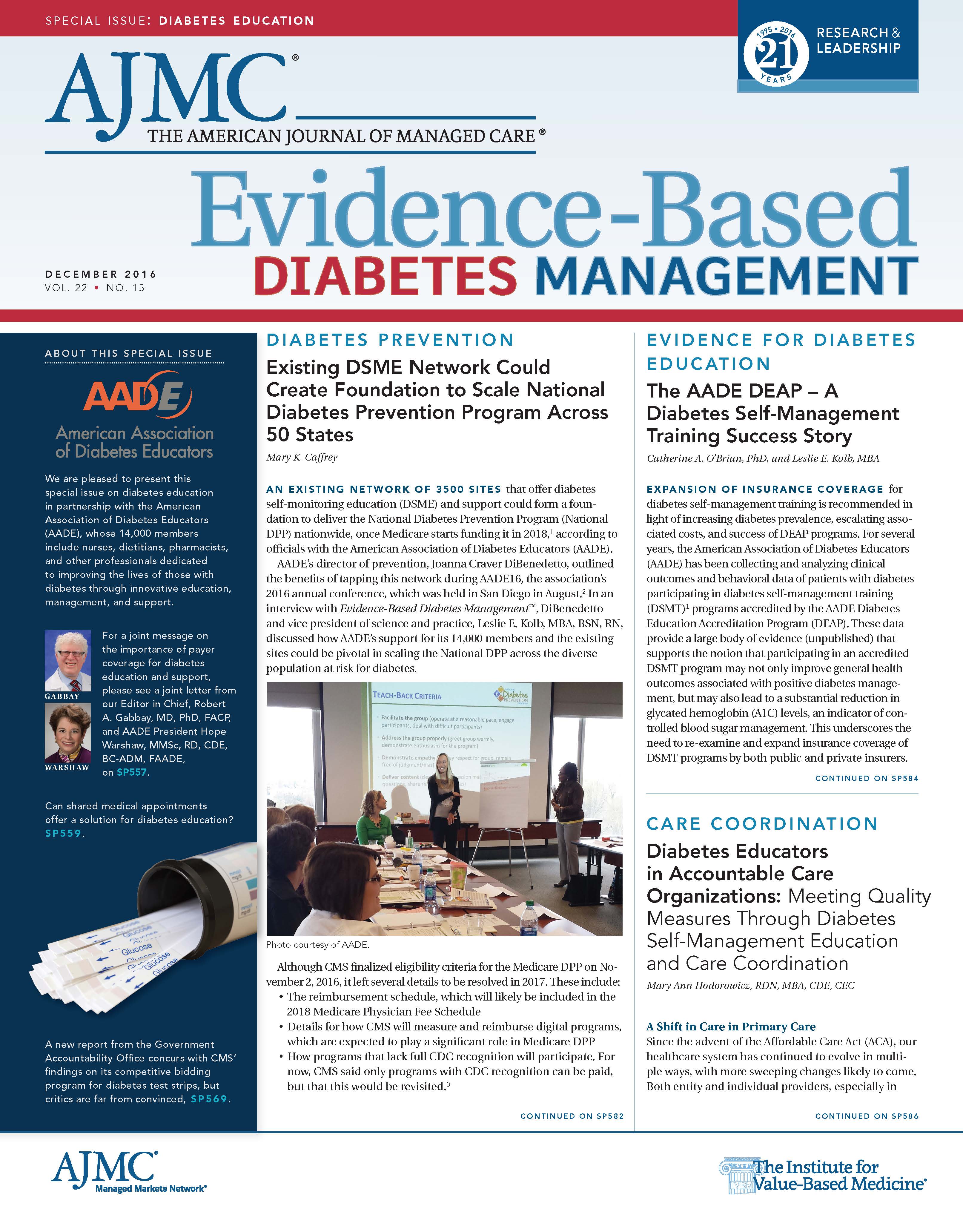- Center on Health Equity & Access
- Clinical
- Health Care Cost
- Health Care Delivery
- Insurance
- Policy
- Technology
- Value-Based Care
Utilization of CDEs in Primary Care Under the Guidance of an Endocrinologist "Better Than Any New Drug," Researcher Says
AADE16 Conference Coverage
For Paresh Dandona, MD, PhD, being the distinguished professor and chief of Endocrinology at the State University of New York at Buffalo might be important for being on the board of Diabetes Care or publishing peer-reviewed articles. But in his clinic, he noticed none of that mattered when it came to communicating with patients. As Dandona told an audience gathered at the annual conference of the American Association of Diabetes Educators (AADE), the 2 certified diabetes educators (CDEs) in his practice had far more ability than he did to motivate patients. Of one in particular, Mary Bierbrauer, RN, BSN, CDE, he said, “The way she transmitted my messages to my patients was much more effective.”
Dandona wondered, “Maybe we can reproduce this in the primary care setting.” If highly trained CDEs in a family practice could still consult with an endocrinologist, would the problem of clinical inertia be overcome? From this observation came a small study, presented at the AADE conference, that Dandona believes should make those in diabetes care take notice: when he dispatched CDEs to work alongside a primary care physician (PCP), but under his guidance, the educators were able to gain significant improvements in glycated hemoglobin (A1C) in patients with diabetes, which Dandona deemed “better than any new drug.”
The results, which have been submitted for publication, are dramatic: the 100 patients managed by the CDEs had a mean A1C reduction of 1.6% after 6 months, while a control group of 45 patients treated only by the PCP saw a reduction of only 0.26%. Patients treated by the CDEs lost more weight, as well, with their body mass index falling by 1.3 kg/m2 in the intervention group compared with 0.1 kg/m2 for the control group. The CDE-treated group also recorded improvements in blood pressure, low-density lipoprotein (LDL) cholesterol, and triglycerides superior to those in the controls.
There were some differences between the 2 groups: the intervention group was slightly younger (mean age of 58 years vs 61 years in the control group), and a much higher share of the group had been diagnosed within the past 5 years (62% vs 42%). But as Dandona explained, that may be the point. Too often, he said, PCPs fail to make timely adjustments to treatment regimens early in the course of the disease, which is when patients are known to respond better to therapy.
Maintenance of A1C is not enough, he said. In primary care, the expectations are often too low. “You didn’t expect them to change, and they did not change,” he said. By the time patients with advanced disease get to his clinic, the window of opportunity has often closed, he said. This is a critical issue, according to Dandona, since shortages of endocrinologists, an aging population, and more chronic disease will require most diabetes management to occur in the primary care setting. Diabetes will continue to slowly progress, “unless we wake up the PCP to the devastating effects of diabetes.”
Deploying trained CDEs into primary care can help tackle the “mountain of diabetes,” he said. This is a group that is highly committed, but they need guidance from specialists. The data reveal that the CDEs were more aggressive in making medication changes: 52% of the CDE group had modifications to their regimen compared with 37.7% of the PCP group. Of note, the A1C decline was greater among patients who had a therapy change (mean of 1.9%) compared with those whose therapy was not changed (1.1%).
After the 6-month intervention, when patients returned to management by the PCP alone, the A1C reduction in the intervention group diminished somewhat, to 1.2% at 12 months. This was still greater than the decline in the control group, which was 0.7% at 12 months. Notably, the average A1C for the intervention group was below 7% at 6 months, but crept back up to 7.8% after patients stopped seeing the CDE. In the control group, the average A1C was 8% at 6 months and 7.9% at 12 months. Benefits in blood pressure, weight loss, triglycerides, and LDL cholesterol were largely maintained in the CDE group, despite the rise in A1C at 12 months.
Dandona said the results highlight the problem of clinical inertia, which affect his ability to change patient behavior when patients progress and are referred to him. “There are a lot of patients who need attention, but we are basically sitting there doing nothing,” he said. When these patients get to the endocrinologist, “they are already reticent in changing their habits, because for years, they’ve been told they are perfectly OK.”
The results also show how the standards of care could be revolutionized by “letting loose” CDEs to take a more active role in primary care. “CDEs working with endocrinologists can change outcomes in a really remarkable fashion, such that the whole face of diabetes can be changed,” he said.

Managed Care Reflections: A Q&A With Laurie C. Zephyrin, MD, MPH, MBA
November 12th 2025To mark the 30th anniversary of The American Journal of Managed Care, each issue in 2025 includes a special feature: reflections from a thought leader on what has changed—and what has not—over the past 3 decades and what’s next for managed care. The November issue features a conversation with Laurie C. Zephyrin, MD, MPH, MBA, senior vice president for achieving equitable outcomes at the Commonwealth Fund. This interview has been edited for length and clarity.
Read More

